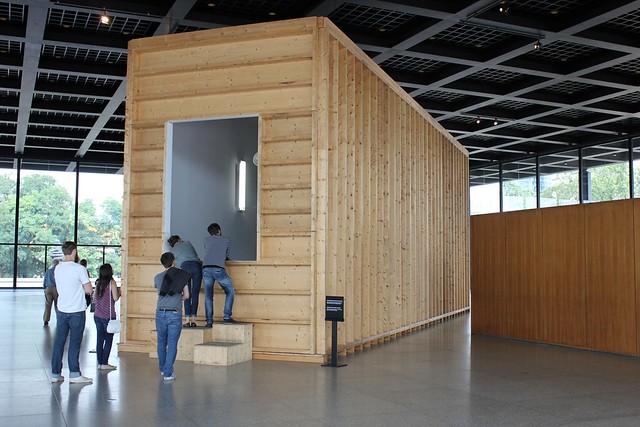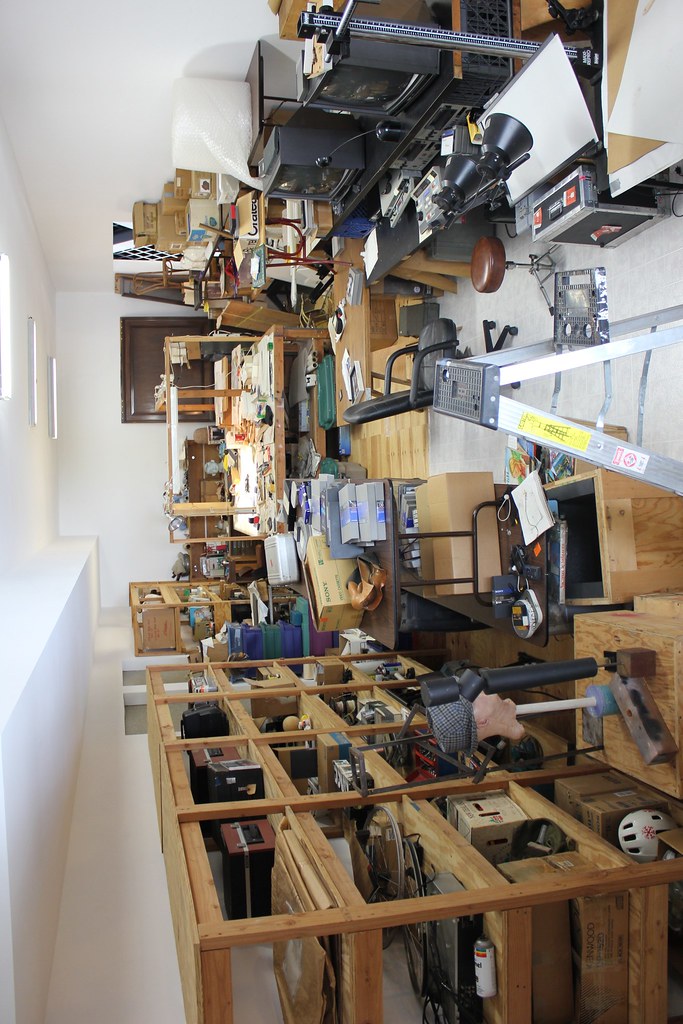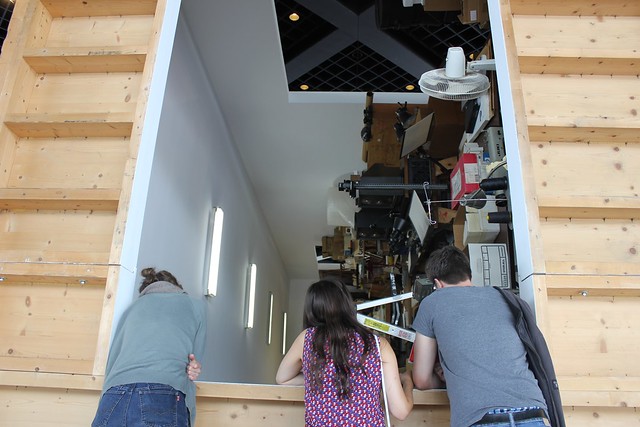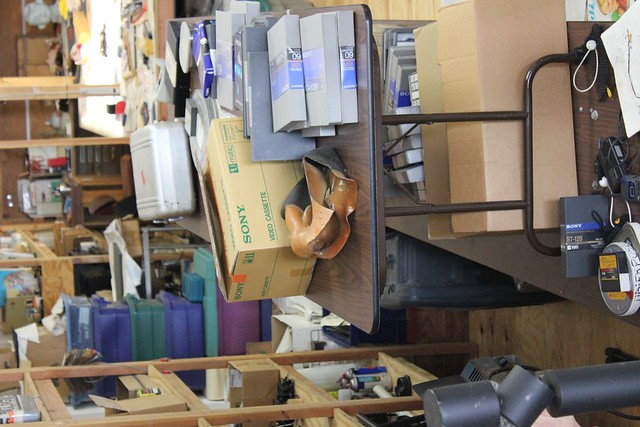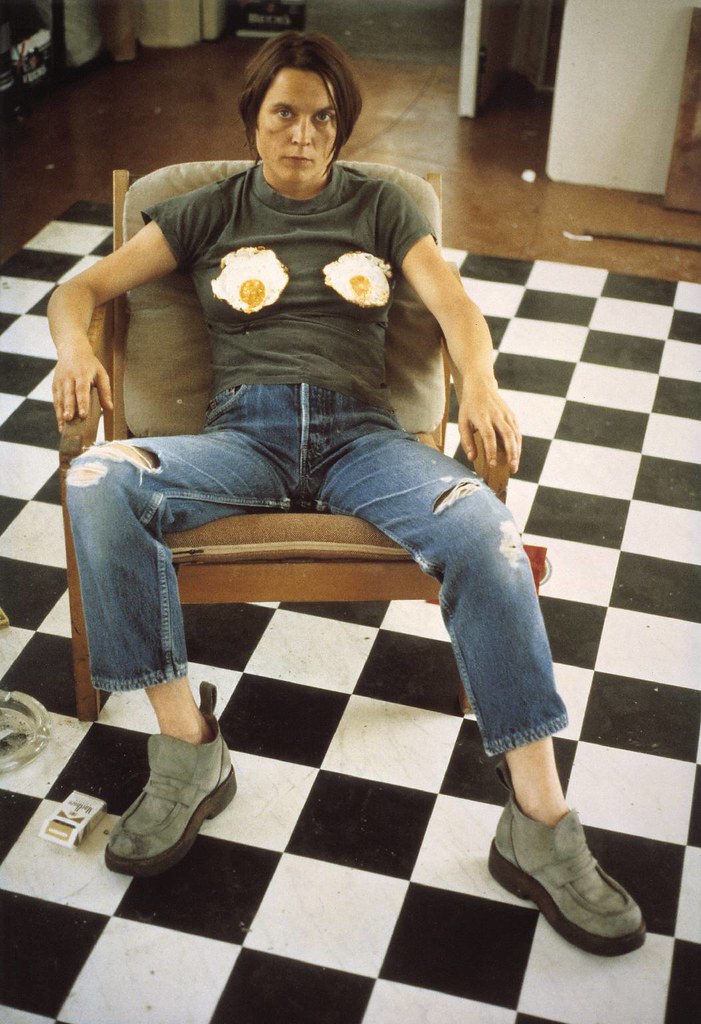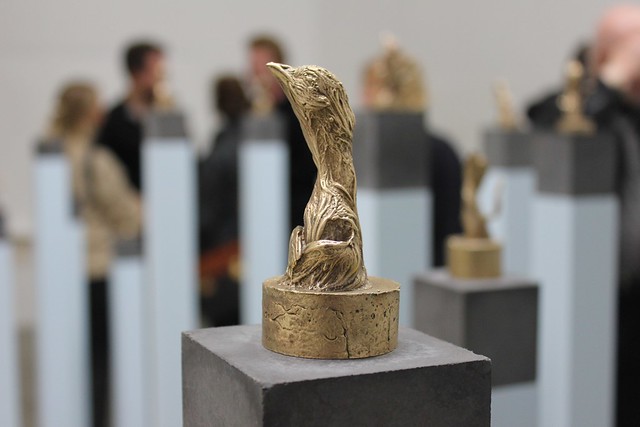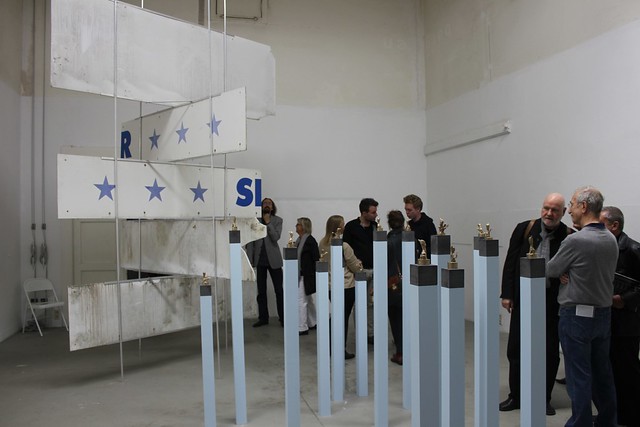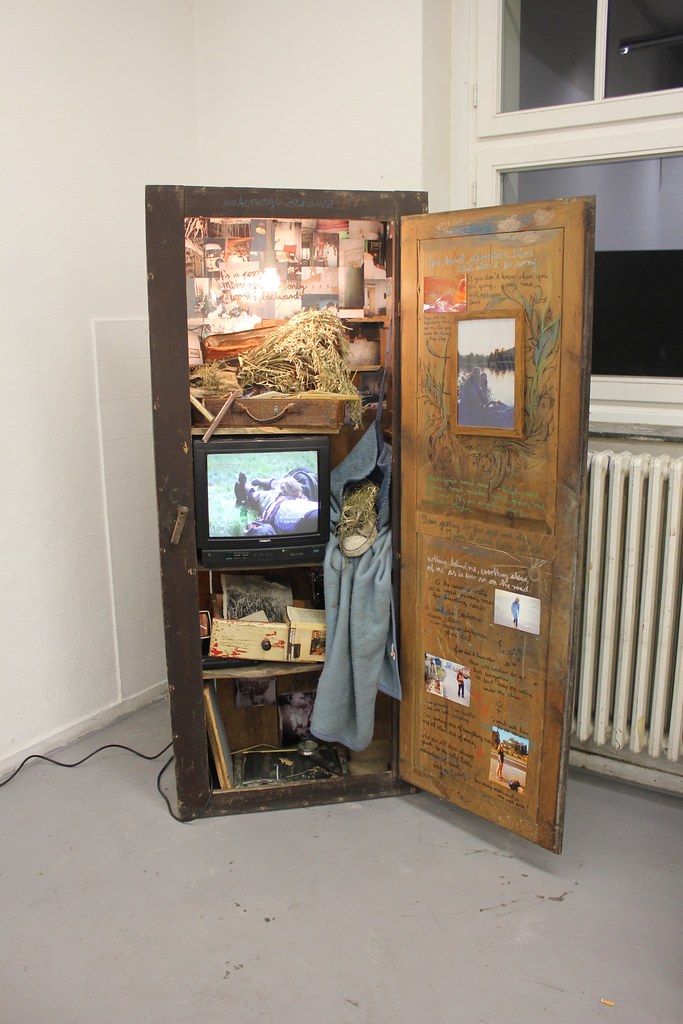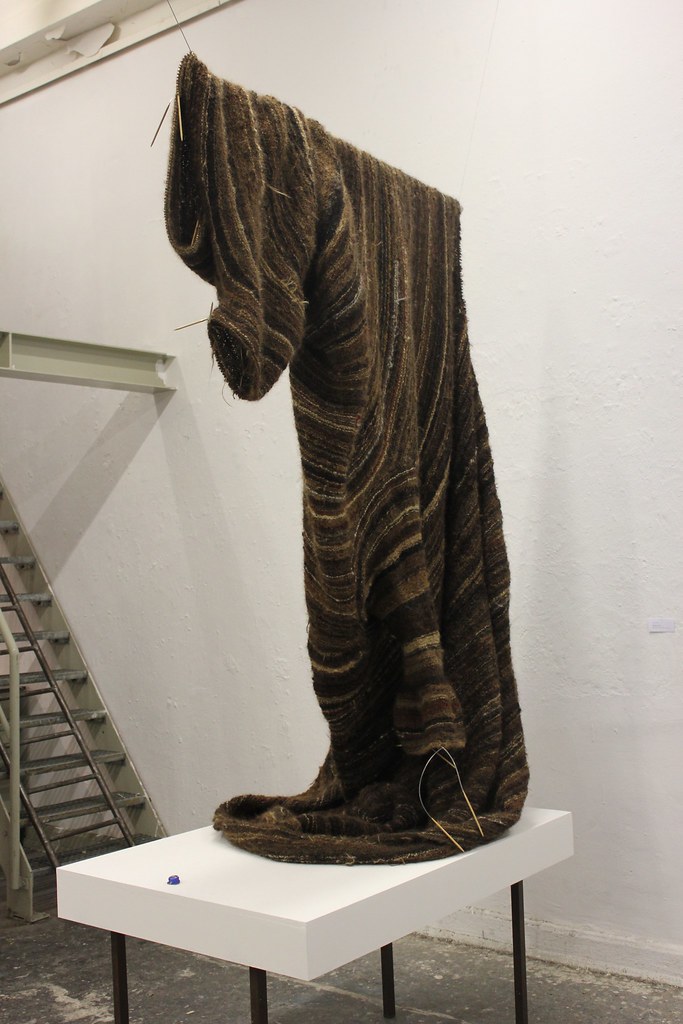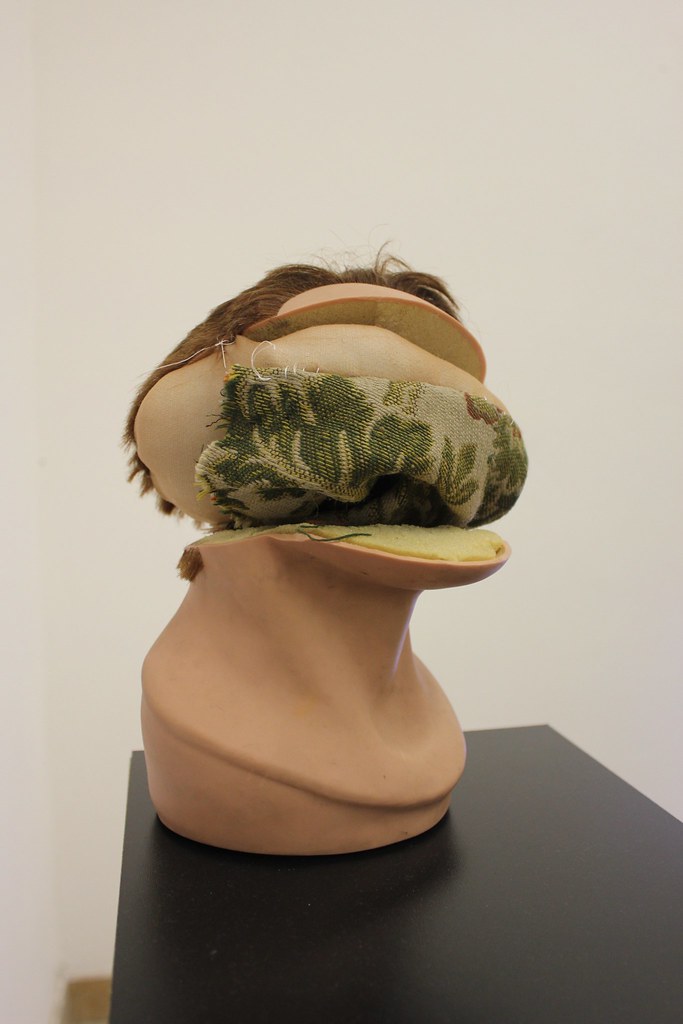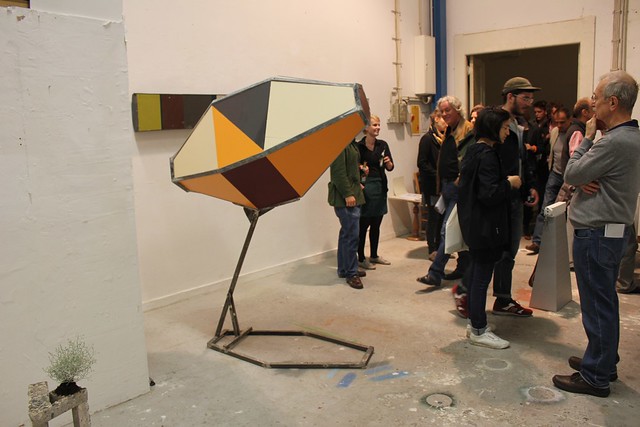
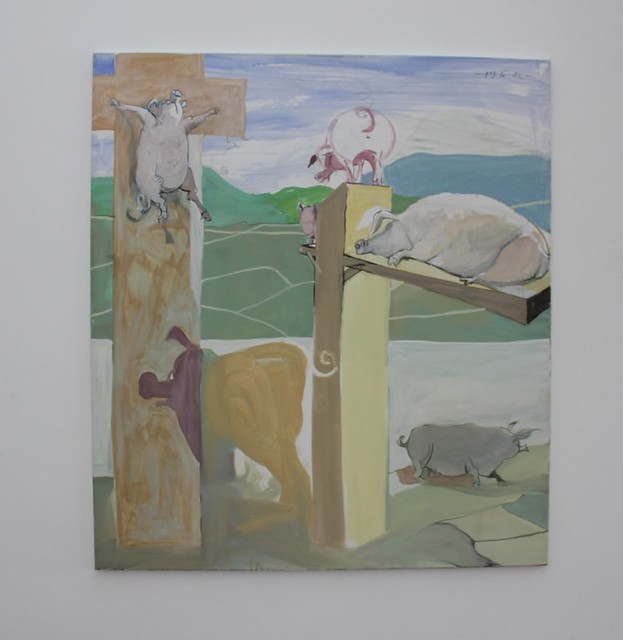
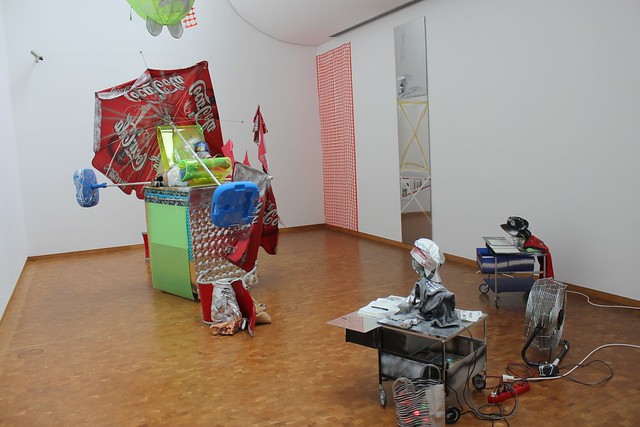


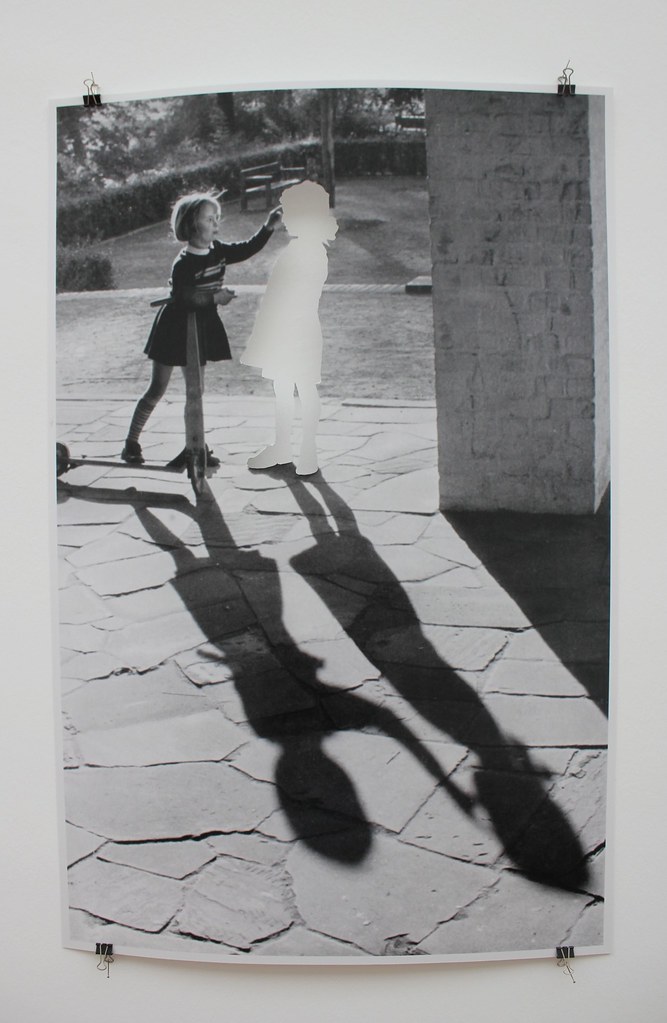
From the top: Zoe Leonard "Tree"; Siegfried Anziger "Sechs Schweine"; Isa Genzken "Kinder Filmen"; Pawel Althammer "Cameraman"; Jimmy Durham "Building a Nation"; Hans-Peter Feldmann "Installation" (Detail); images by artfridge, Courtesy Museum Ludwig, Köln
Kaspar König had many dreams, when he enthusiastically curated "Museum of our Desires"- his first exhibition as Museum Ludwig's director in 2001. He borrowed those pieces that he imagined to fit into the collection and placed them between the museum's own. In the past twelve years, König was able to buy approximately 120 works, which he desired. His current and last show at Cologne's Museum for Contemporary art ties in with his first one: "One Wish is Always left Unfulfilled" talks less big, points to the dilemma of a collection's infinity, its impossible perfection. But at the same time, it celebrates a triumph: "Kaspar König takes stock" - and it doesn't look mingy at all.
Pawel Althammer's "Cameraman" (1995) was one of the first works that König bought. Therefore the uncanny sculpture welcomes the visitor right at the entrance of the floor.
Siegfried Anzinger's painting "Six Pigs" (2012), on the contrary, gives an idea of König's relaxed and playful way of organising a collection. Works by the evergreens
Rosemarie Trockel or
Franz West meet
Manfred Pernice recycle-environments.
His fondness for room-filling installations is expressed several times: Crowned by
Jimmi Durham's "Building a Nation" (2006), followed by
Stephen Prina's pink sofa-sound-scape "The Second Sentence of Everything I Read is You: The Queen Mary" (1979-2006),
Isa Genzken's insane beach bar "Kinder filmen" (2005) or
Zoe Leonard's affective patched-up "Tree" (1997/2011). The biggest surprise for me was
Hans-Peter Feldmann's room "Installation" (2012), consisting of several small objects and photographic collages of seemingly inconspicuous images that the artist arranged himself.
Without a doubt, the is the end of an era - a great era, to be clear.
Phillip Kaiser, the new museum's director, will breathe some fresh air into the established venue. And also he will be full of dreams and enthusiasm. Imagining a growing collection that exists only by the drive of never being complete.
